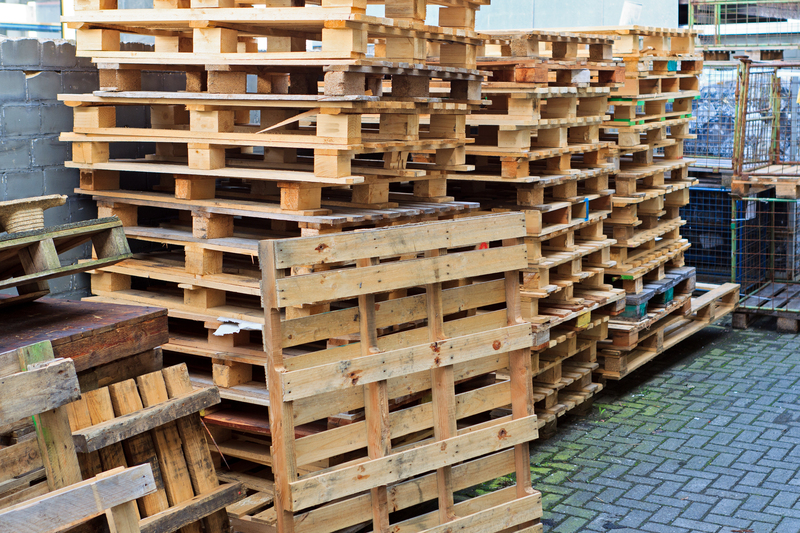Striving for an eco-friendly home is not only beneficial for the environment but also cost-effective and healthier for you and your family. With this comprehensive guide, we will explore practical ways to transform your living space into a sustainable haven. Let's dive into effortless steps to achieve an eco-friendly home.
Understanding the Importance of Sustainability
Before we embark on the journey to an environmentally friendly abode, it's crucial to understand the significance of sustainable living. By adopting eco-conscious habits at home, you're contributing to the conservation of natural resources, reducing pollution, and combating climate change.
The Benefits of an Eco-Friendly Home
- Reduced Energy Consumption: Eco-friendly homes are designed to be energy-efficient, leading to lower utility bills.
- Improved Indoor Air Quality: Using natural and non-toxic materials can enhance the air quality inside your home.
- Increased Property Value: Sustainable homes often have a higher market value compared to conventional homes.
- Conservation of Resources: By utilizing water-saving techniques and renewable energy sources, you're conserving precious resources.

Step 1: Optimize Energy Efficiency
Enhancing energy efficiency is a fundamental aspect of making your home eco-friendly. Here are some strategies to get started:
Insulation and Sealing
Ensure that your home is well-insulated. Proper insulation helps maintain a consistent temperature, reducing the need for heating and cooling. Seal any gaps around windows and doors to prevent air leaks, which can lead to energy loss.
Smart Home Technology
Incorporate smart home devices such as programmable thermostats and energy-efficient lighting. These technologies allow you to control energy usage remotely, optimizing consumption.
Upgrade to Energy-Efficient Appliances
Replace outdated appliances with energy-star rated models. They consume less power, helping you cut down on electricity bills while reducing your carbon footprint.
Step 2: Harness Renewable Energy
Reducing reliance on fossil fuels is vital for sustainable living. Consider adopting renewable energy solutions to power your home.
Solar Panels
Investing in solar panels can significantly decrease your energy bills and minimize your home's environmental impact. Solar technology has become more affordable, making it an accessible option for many homeowners.
Wind Turbines
If your location is suitable, small-scale wind turbines can be an excellent addition to your eco-friendly home, providing an additional source of clean energy.
Step 3: Water Conservation Techniques
Water is a precious resource, and conserving it is a critical component of sustainable living.
Low-Flow Fixtures
Install low-flow faucets, showerheads, and toilets to reduce water usage without sacrificing performance. These fixtures are designed to conserve water efficiently.
Rainwater Harvesting
Set up a rainwater harvesting system to collect rainwater for outdoor irrigation. This simple step can save a significant amount of water, especially in areas prone to drought.
Step 4: Reduce, Reuse, Recycle
Adopting a mindful approach to consumption is essential in creating an eco-friendly lifestyle.
Minimize Waste
Practice the three Rs - reduce, reuse, and recycle. Purchase products with minimal packaging, buy in bulk, and compost organic waste to minimize landfill contributions.
Eco-Friendly Materials
Use sustainable materials in home renovations or when purchasing new furniture. Materials such as bamboo, reclaimed wood, and recycled metal are excellent choices for an environmentally conscious home.
Step 5: Cultivate a Green Garden
Gardens can play a crucial role in promoting a sustainable habitat by supporting native biodiversity and improving air quality.
Native Plants
Choose native plant species for your garden. They're adapted to the local climate, requiring less water and maintenance than exotic plants.
Composting
Create a compost bin to recycle kitchen waste into nutrient-rich soil. Composting reduces landfill waste and provides a natural fertilizer for your garden.
Step 6: Indoor Environmental Quality
Enhancing the indoor environment is vital for your health and wellbeing.
Use Eco-Friendly Cleaners
Switch to non-toxic cleaning products that are free from harsh chemicals. Opt for natural solutions such as vinegar and baking soda to clean your home effectively.
Improving Ventilation
Improve air quality by incorporating adequate ventilation and investing in indoor plants. Certain plants, like the snake plant and peace lily, are known for their ability to purify air.

Step 7: Rethink Transportation
Your eco-friendly journey can extend beyond the walls of your home.
Electric Vehicles
Consider electric vehicles as a sustainable transportation option, reducing dependency on fossil fuels and minimizing air pollution.
Public Transport and Cycling
Encourage the use of public transportation and cycling as alternative, greener modes of travel. These methods are not only eco-friendly but also promote a healthy lifestyle.
Conclusion: Embark on Your Eco-Friendly Journey
Creating an eco-friendly home may seem daunting, but it unfolds through effortless steps that collectively make a significant impact. By incorporating these changes, you'll enjoy a sustainable, energy-efficient, and healthy living environment. Embrace this journey to eco-friendly living and become part of the global solution for a better future.
Once you've implemented these strategies, not only will you experience the benefits personally, but you'll also contribute positively to the planet. Let's redefine the meaning of home, one sustainable step at a time.